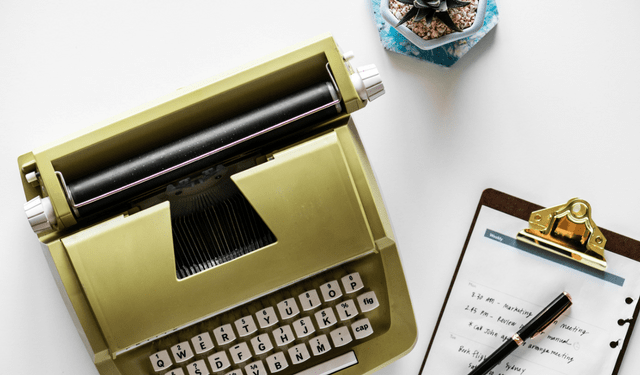
1. Take 10-15 Minutes
In the morning before you sit down and start “reading” through emails, most people give themselves about five minutes to grab coffee. Through the years I’ve personally found it extremely helpful to give myself 10-15 minutes in the morning – before coffee – to take a look at my emails, tasks, meetings for the day and urgent requests. No, I don’t read all my emails within this time frame, but I can briefly assess what emails are urgent, what emails I can reply to right away (if it’ll take less than two minutes), and what emails need to be pinned to the top of my inbox.
By taking a few minutes to also look at my calendar I can also get an idea of how much time I’ll have in the day to do “work” (time not being spent in meetings). Lastly, within these 10-15 minutes, I like to write it all down!
2. Write It Down!
That’s right, write it down! As in pen/pencil to paper. With all the technology we use everyday, we forget that we can write things down, instead of keeping a digital to-do list. There’s nothing wrong with that but according to a study done by Pam A. Muller of Princeton and Daniel M. Oppenheimer of UCLA, writing requires the processing and rephrasing of information which makes a lasting impression on your memory. Writing it down = remembering what you have to do.
I have a notebook specifically for my to-do lists. During my morning “10-15 Minutes to Process” time, I write my to-do list for the day: I take a look at tasks from the day before and add anything that hasn’t been completed to my new list, based on my emails I’ll add new tasks and color code each task to visually know what is of higher priority.
3. Prioritize and Set Deadlines
Talking about priorities, nothing helps me stay more organized than prioritizing my tasks and giving each task a deadline. As mentioned previously, I like to color code my tasks as it gives me a visual of what needs to get done right away. Additionally, when I set deadlines I can better understand how long something will take and usually I find that there are tasks that, even though they’re not due right away, can be completed quickly. I tend to move those to the top of my list and get them done right away.
In some cases, tasks can be a bit vague and there isn’t a drop-dead deadline. This can be dangerous for two reasons: 1) you will procrastinate forever or 2) you’ll forget about it and will remember when it becomes urgent. To avoid any of these scenarios, give all your tasks deadlines even if one isn’t set by your team, client, boss, etc. When you complete it, it’ll feel great crossing it off your to-do list.
4. Multitasking Is Not Always Your Friend
Oftentimes we have to multitask, but it’s not always beneficial. According to an article published by Northeastern University, humans are unable to switch from one task to another without losing focus, attention and productivity. What I like to do is “get-in-the-zone” with an instrumental playlist on Spotify and focus on one task at a time. I find I’m much more productive and can get through my to-do list much faster.
5. Say No to Meetings
Meeting after meeting after meeting. It doesn’t leave much time to sit down and tackle your tasks. Don’t be afraid to ask if you’re needed in a meeting – just because you were invited doesn’t mean you’re required to attend. Double check with the organizer and you might be surprised to find out that you have more time to work on other things!
If you’re required at a meeting, be prepared to be a productive and efficient attendee so that your time is well spent. And ideally, your meeting won’t take as much time as you initially thought.
Whether you start writing it down or you stop multitasking, give these tips a try, you might be pleasantly surprised. For more helpful tips, browse our other blog posts!



